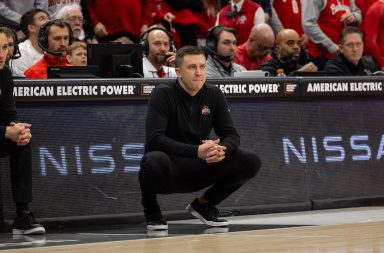Faster, harder and smoother is the goal of the Ohio State University Department of Recreational Sports, as it sets its sights on building a high-quality skate park on Ohio State’s campus.
The skate park design would include a variety of obstacles and would cater to novice and skilled skaters. The department plans to create an appealing destination that incorporates bowls, ramps, transitions and street elements, attracting regional skateboarders, bikers and skaters.
 KENNY GREER/THE LANTERN
KENNY GREER/THE LANTERNIn the U.S., skateboarding, biking and incline skating have sped to the forefront of youth sports. In the past, these disciplines have ranked 14 and 15 on a list of popular youth sports compiled by the National Sporting Goods Association. With companies such as ESPN, Mountain Dew and the Alliance of Action Sports supporting the sports and presenting them a mainstream audience, each year their popularity reaches new heights. In 2008 skateboarding and biking made the list at numbers four and five.
“Now is the perfect time for this to happen,” Jonhathan Hoch, the student assistant at the west campus skate park. “It’s an opportunity to help all the youths that participate in action sports. How many programs do you see for soccer, baseball, basketball, and football in our community? I want all the kids who freestyle BMX, inline skate and skateboard to have the same support system and opportunities.”
Other communities with skate parks include Delaware, Dublin and Powell, but many of these parks are small.
The Department of Recreational Sports would like to make the new park a joint venture with these surrounding municipalities.
“What we hope to do is partner with other communities,” Mauer said. “The more communities we get involved in this process obviously the bigger the budget and the better this could be.”
The project is in its beginning stages and the department has committed funds to the skate park, but it is still waiting for a budget to be approved. No site has been decided, the site and size of the park depend on the budget.
In the meantime, skaters will have to settle for the 5-year-old park on West Campus, which has spurred complaints from many students.
“The ramps are heavily damaged, and the size of the ramps and the area is limiting,” said Matt Burgdorf, a senior in landscape architecture. “It’s just dilapidated.”
The park opened when the Department of Recreational Sports received a few pieces of skate park equipment and decided to place them on West Campus for use. Students built additional pieces, but the department has decided to adapt the these parts and make them more permanent.
“There hasn’t been a lot of money put into it because it was always thought of as temporary,” Mauer said.
“In the spring we’ll cover the wooden surfaces out there with skatelite.”
The skatelite material will help prevent further damage of the wooden structures.
Tanesha Washington can be reached at [email protected].


